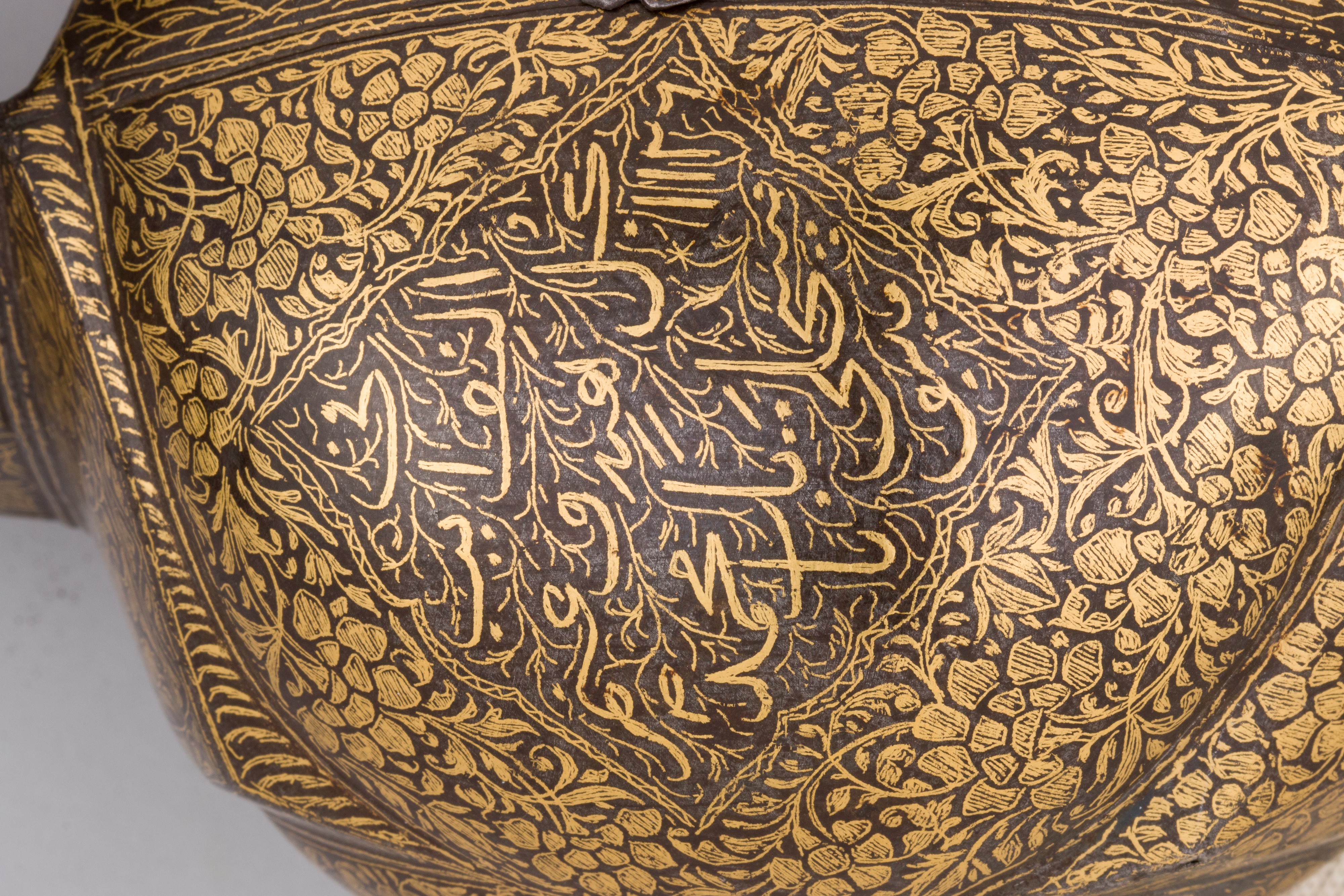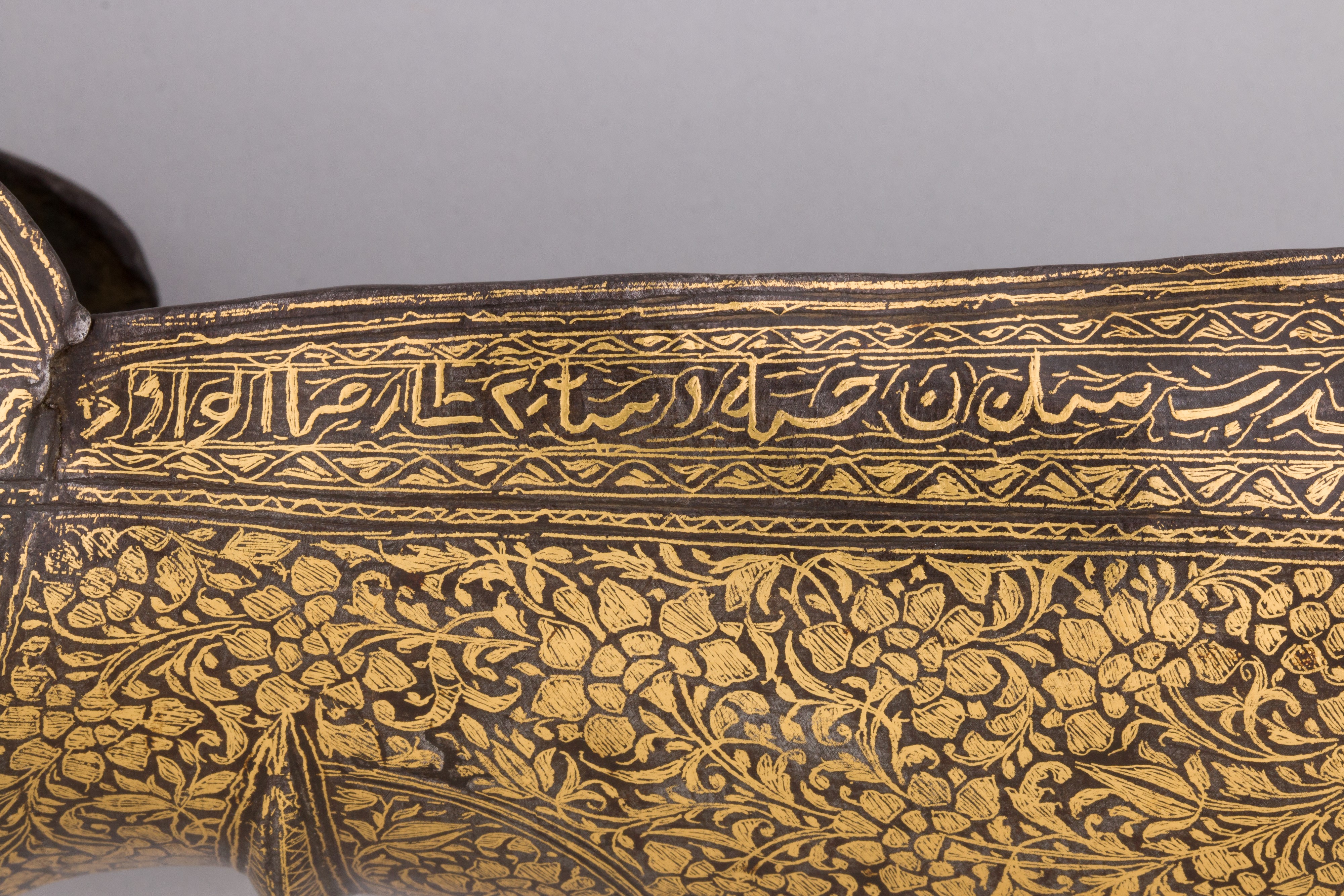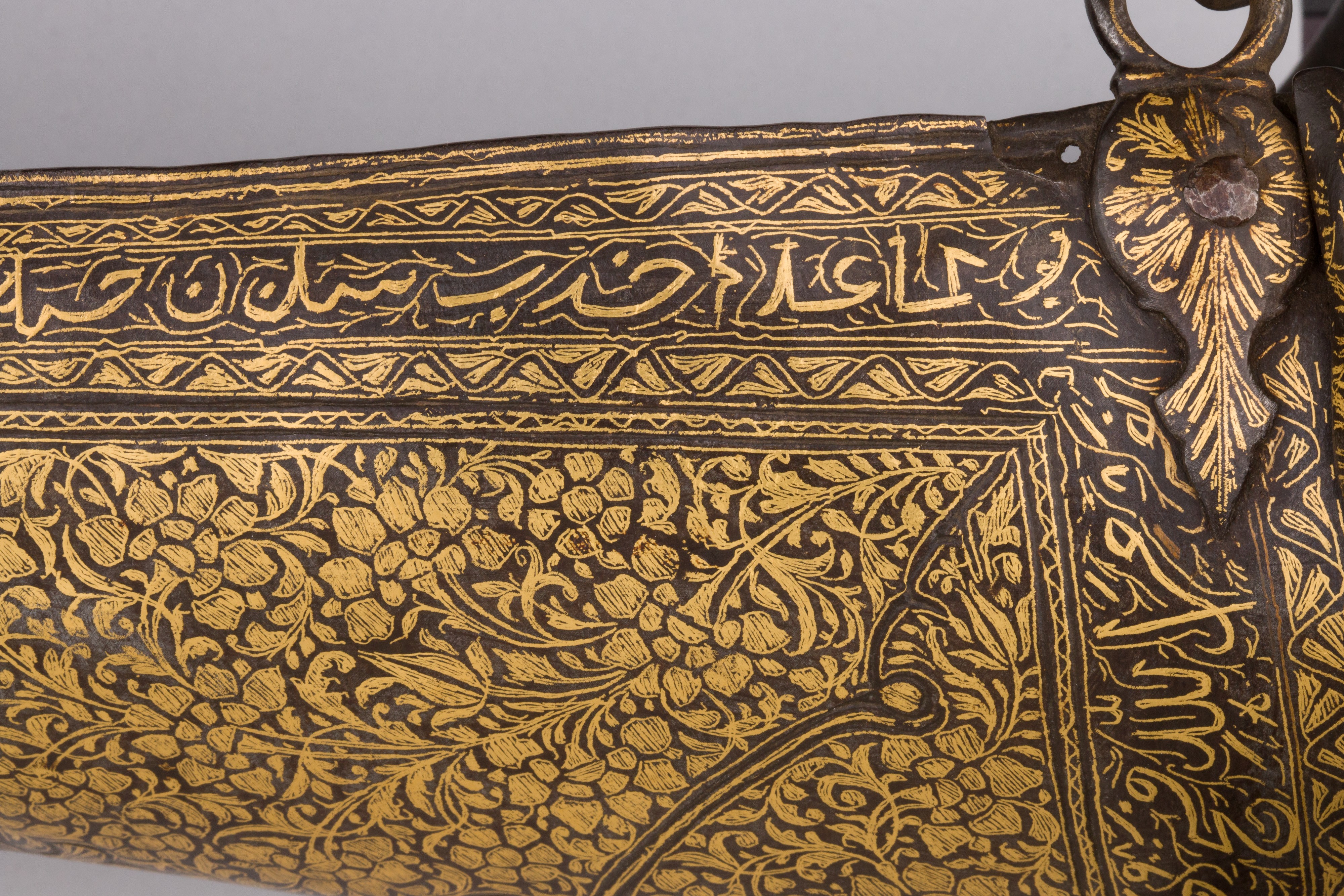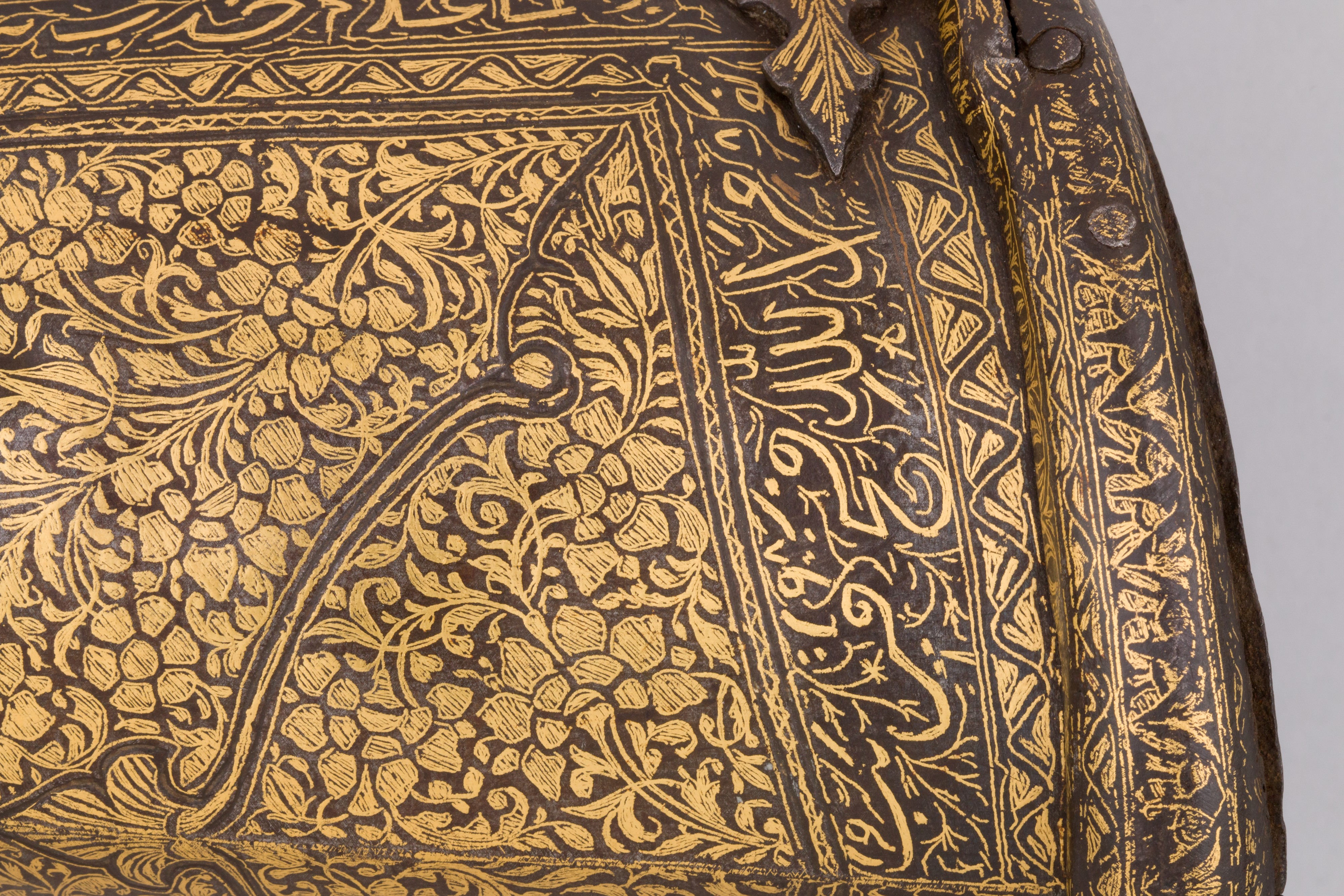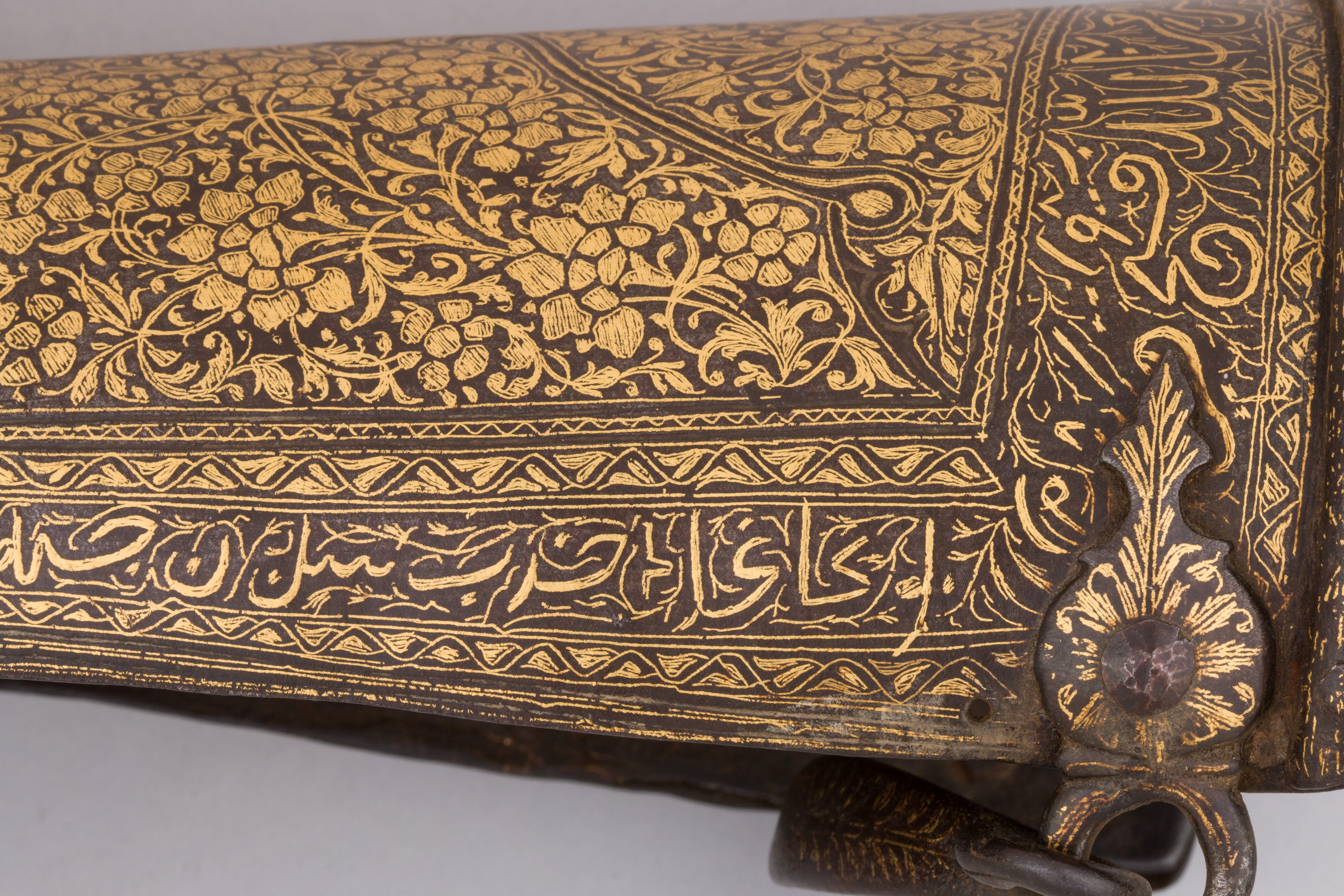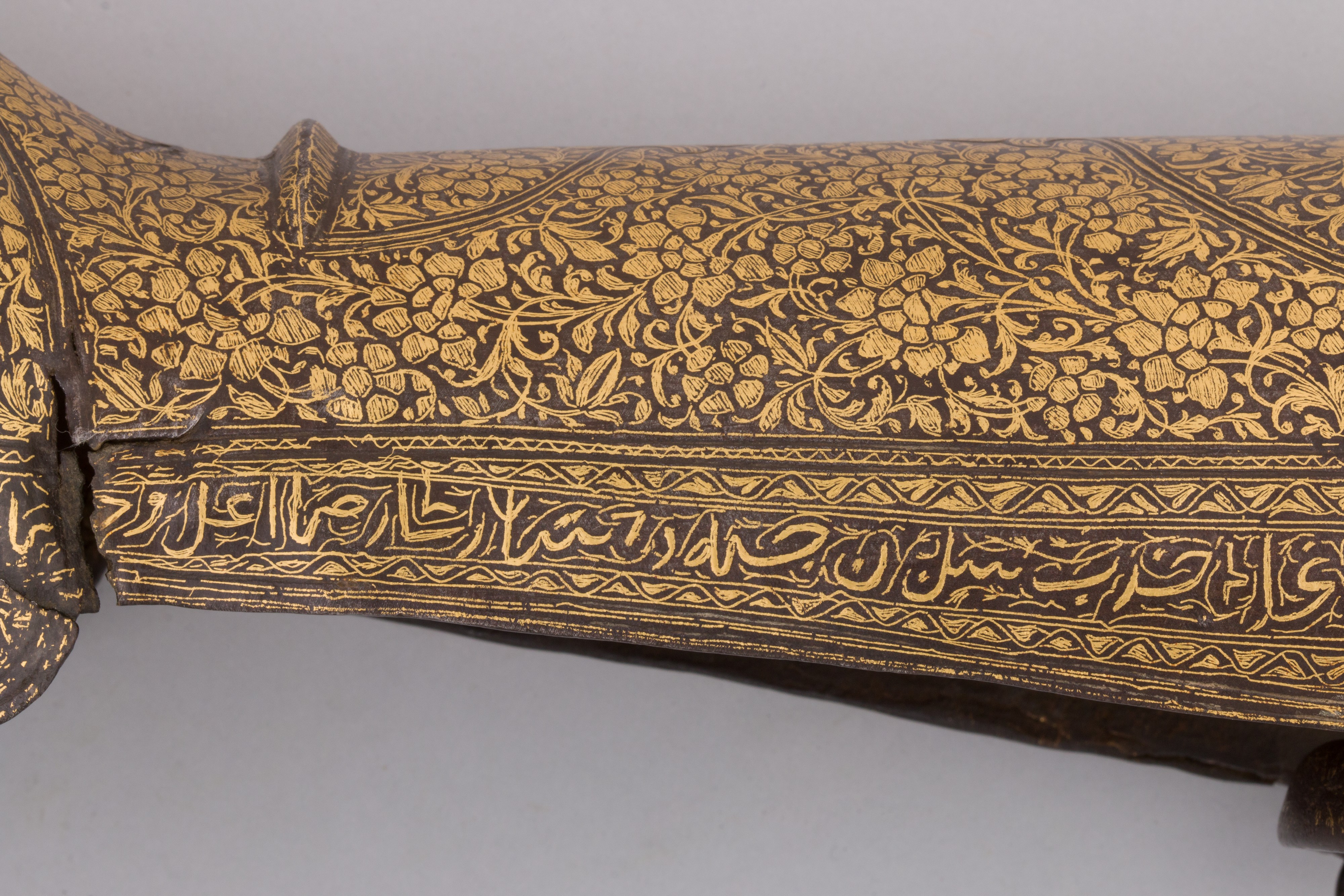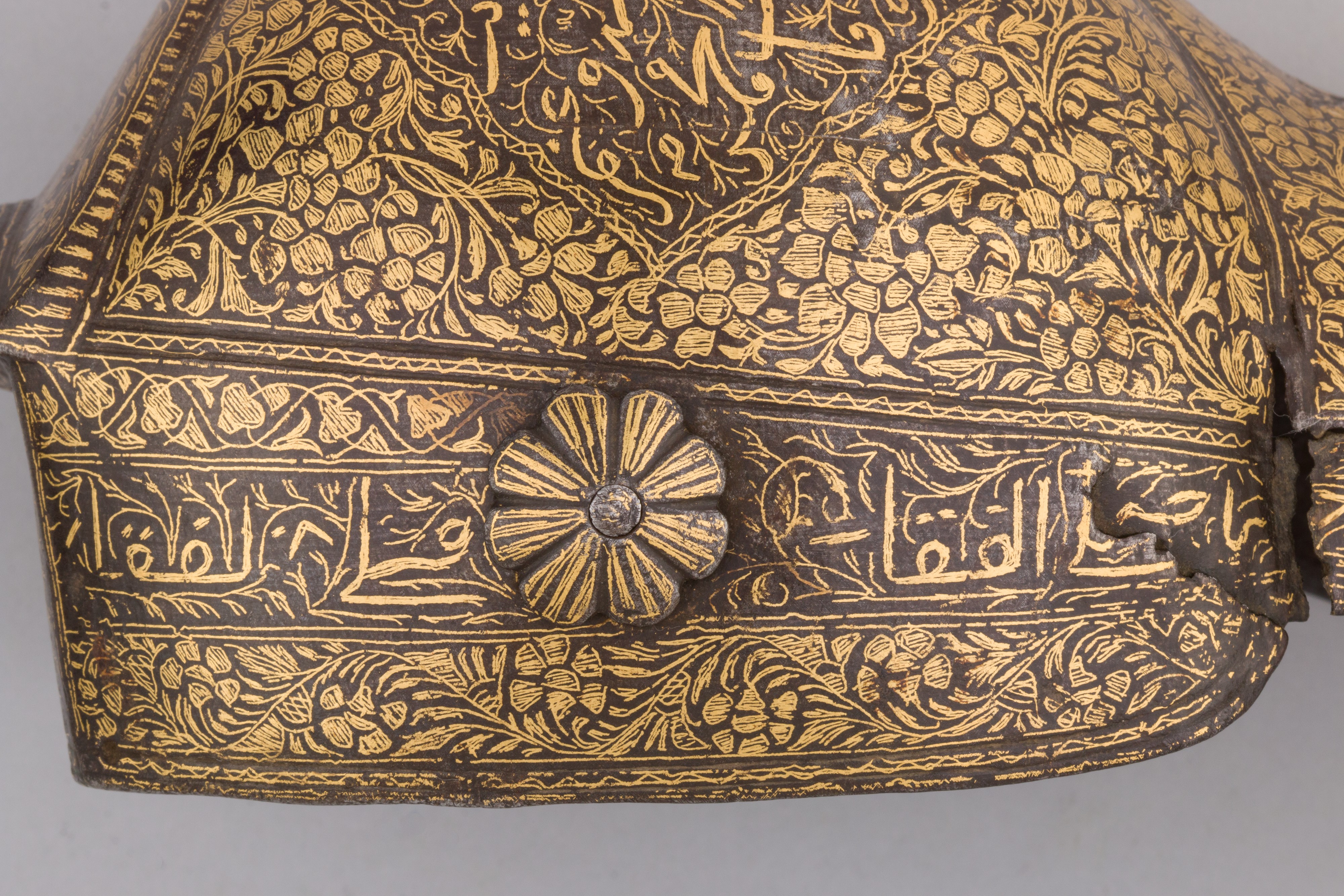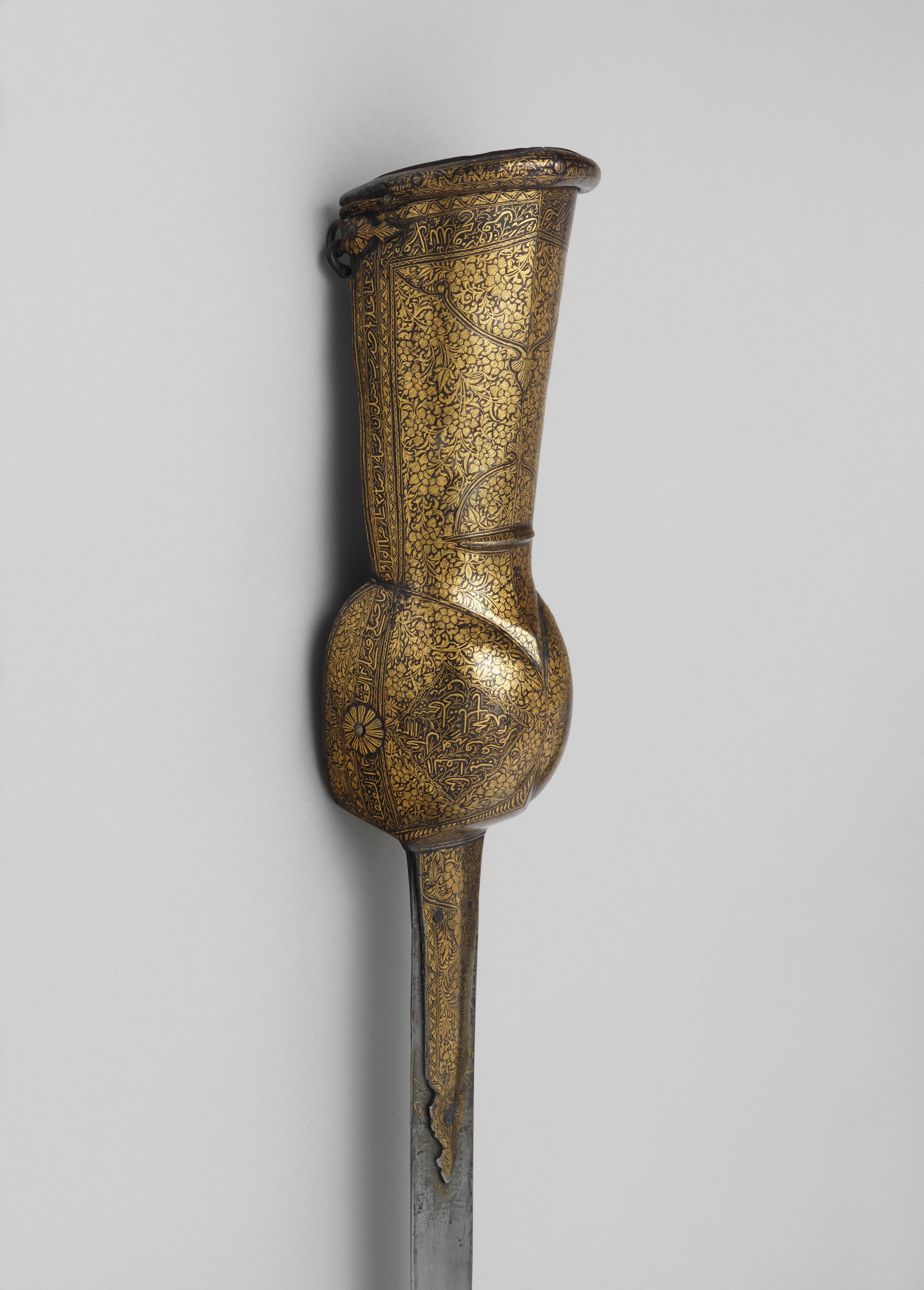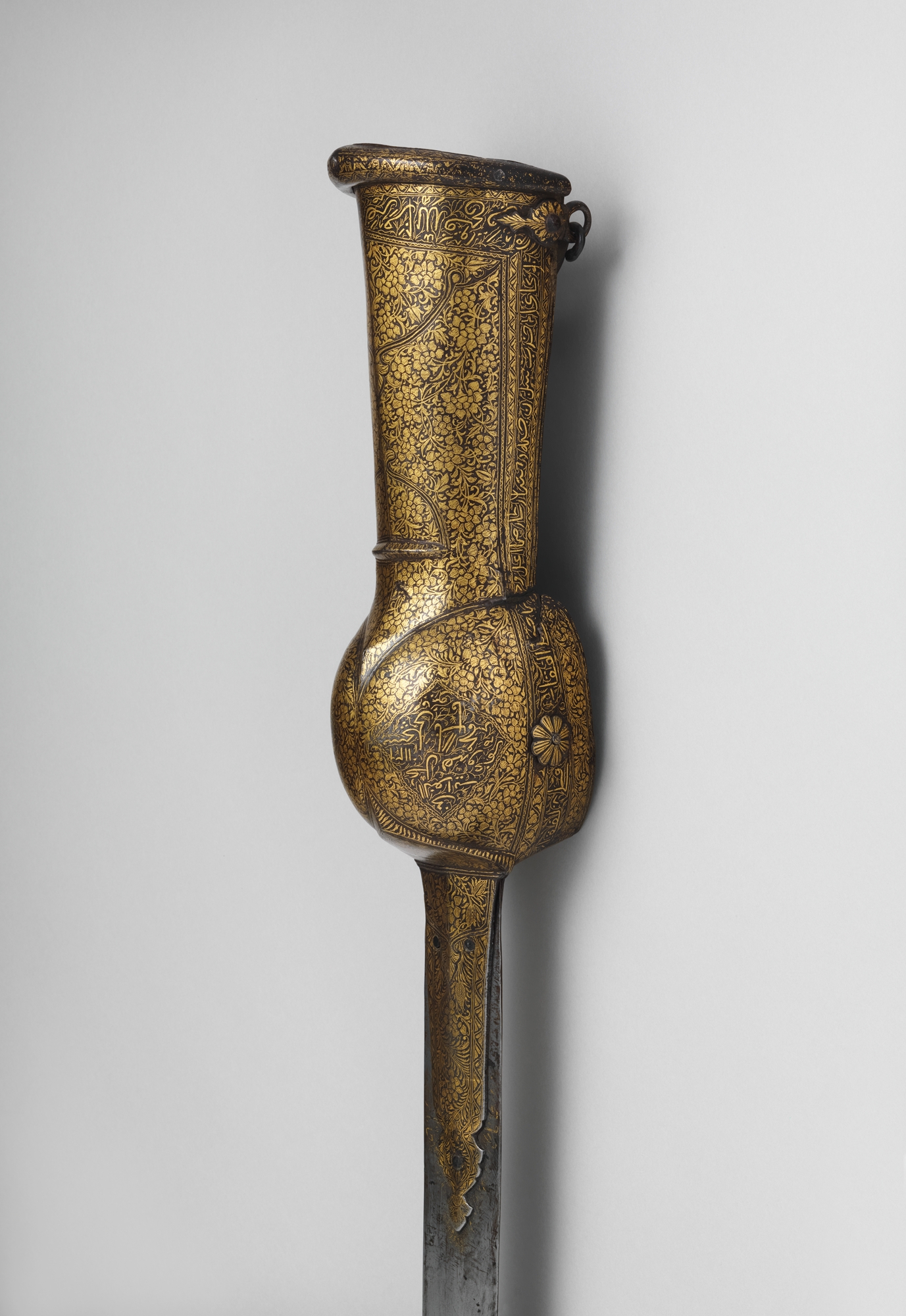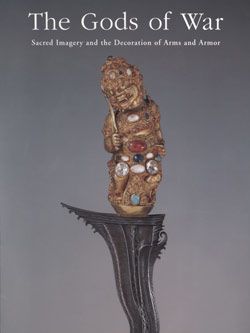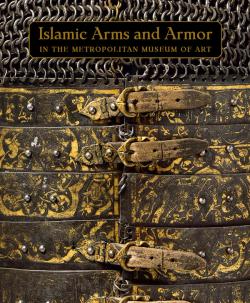Gauntlet Sword (Pata)
Not on view
Sometimes the nature of the inscriptions on a piece of armor or a weapon indicates an allegiance to a particular religious sect. A noteworthy example of such sectarian decoration occurs on this gold damascened gauntlet sword (pata), which is dated A.H. 1126 (A.D. 1712) and was probably made in one of the Islamic sultanates of the Deccan region of south-central India. The choice of inscriptions makes it clear that the owner of the pata was a Shiite, rather than a Sunni, Muslim. The majority of Muslims adhere to the Sunni (literally, "one of the path") tradition. Shia (literally, "followers") constitutes the largest divergent group within Islām. It became the predominant form of Islām in Iran, southern Iraq, and parts of India during the sixteenth century.
The pata, like the katar, is an edged weapon unique to India. Its use apparently originated with the Mahrattas of the western Deccan and eventually spread through much of India (compare to acc. no. 36.25.1540). The hilt of the pata consists of a bulbous steel shell that encompasses the hand and flares out into a cuff over the forearm, extending nearly to the elbow. The pata, again like the katar, is held by a transverse bar gripped with the fist. The rigid gauntlet of the hilt makes the long, flexible double-edged blade essentailly an extension of the forearm. It also holds the hand and wrist in a fixed position, unlike any other sword form, requiring all motions with the blade to be made from the elbow and shoulder.
The gauntletlike hilt of this pata is decorated in two ogival cartouches on its spherical portion and along its perimeter with three inscriptions that are characteristically Shiite, particularly when used in combination with one another. The phrase at the bottom edge of the gautlet cuff is from the Qur'an (sūra 61:13): "Help from God and a victory near at hand." The title of this sūra, the Ranks, or Battle Array (sūrat al-ṣaff), indicates its theme––the exhortation of believers to fight for God. In it Moses and Jesus are cited as precursors to Muḥammad in the struggle for the true faith. Running along the border on the sides of the gauntlet is a pious invocation that is used in Sunni as well as Shiite contexts: "There is no young hero (fatā) like 'Alī and no sword like Dhū al-fiqār (the Sword of 'Alī)." The 'Alī referred to is the cousin and son-in-law of Muḥammad, who was the fourth caliph to succeed him, following Abū Bakr, 'Umar, and 'Uthmān. Shiites consider 'Alī the first legitimate successor (imām) of the Prophet; in both the Shia and Sunni traditions he is revered as the model of chivalrous heroism in the defense of the faith and is called the Lion of God. In the ogival cartouches, along with the date, is an excerpt from a popular Shiite prayer to 'Alī known as the Nādī 'aliyyan (Call upon 'Alī), named for the first words of its opening line, "Call upon 'Alī, the manifester of miracles."
Due to rights restrictions, this image cannot be enlarged, viewed at full screen, or downloaded.
This artwork is meant to be viewed from right to left. Scroll left to view more.


